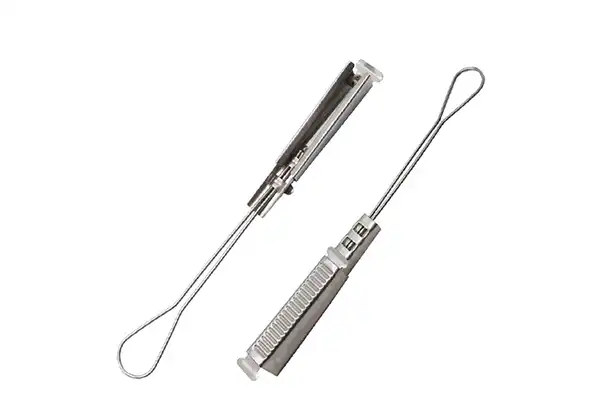Drop wire clamp is used on the power transmission line, securing and supporting drop wires or service wires. Drop wire clamps are also known as service drop clamps. They are mainly used on the telecommunications and ADSS or OPGW cable installation projects. It attaches the drop wire to supporting structure like pole or building. They also provide strain relief to prevent damage to the wire.
Selecting the best drop wire clamp needs consideration of several factors including intended application, conductor size, mechanical strength, voltage levels, cost, and others.
By design, the drop wire clamp is resistant to corrosion and weathering to ensure long-lasting performance in outdoor environments. They also maintain proper positioning and support of the drop wires. In addition to that, drop wire clamps also help prevent sagging, tension-related issues and damage to the drop wire. This ensures that there is reliable signal transmission and uninterrupted service.
Common technical specification
| Drop Cable | Material | Shim Type |
|---|---|---|
| 1-2 Pair | Aluminum | Dimpled |
| 1-2 Pair | Stainless | Dimpled |
| 1-2 Pair | Aluminum | Serrated |
| 1-2 Pair | Stainless | Serrated |
| 1-2 Pair | Aluminum | Plastic |
| 1-2 Pair | Stainless | Plastic |
| 6 Pair | Aluminum | Dimpled |
| 6 Pair | Stainless | Dimpled |
| 6 Pair | Stainless | Serrated |
Durable drop wire clamp matters

In 2019, a loose drop wire clamp caused a power outage in a small town in the Midwest. The clamp was located on a utility pole near the town’s main intersection. The outage caused businesses to close, traffic lights to go out, and people to lose power to their appliances and computers.
The lineman crew from a local power company quickly identified the problem and began working to fix it. They replaced the loose drop wire clamp with a new one made of a more corrosion-resistant material. They also tightened the new clamp to ensure that it would not come loose again. The new clamp was also designed to be easier to tighten.
The outage was a reminder of the importance of properly maintaining electrical equipment. If electrical equipment is not properly maintained, it can cause problems, such as power outages.
Components of a drop wire clamp
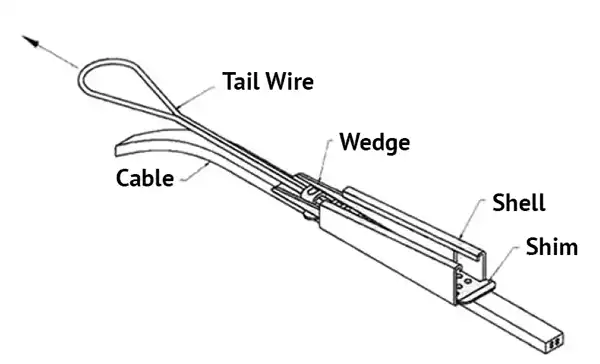
The drop wire clamp consists of a number of components that ensure ease of work to secure and support drop wire. But the features depend on the design, manufacturer and the intended purpose of the clamp. Below are the common components of the drop wire clamp.
- Clamp body: This is the main component of the drop wire clamp that is made of durable materials like metal or plastic. It has grooves designed to hold the drop wire securely in place.
- Bail or retainer: The bail provides additional support and helps holds the drop wire in position. But it may be a separate component that attaches to the clamp body.
- Mounting hardware: Mounting hardware helps to secure and attach the drop wire clamp to the supporting structure. They include utility fasteners such as nuts, screws and bolts.
- Strain relief device: A strain relief device incorporates into the drop wire clamp designed to provide additional support and relief tension on the drop wire. They also help prevent damage to the wire caused by excessive stress or movement.
- Insulation or protective coating: Drop wire clamps have insulation on the coating on the contact surfaces to prevent damage to the drop wire’s insulation. More over, this ensures a secure and reliable connection on the installation.
- Grounding lug: The lug applies in certain cases which enables proper grounding of the drop wire. This also helps to protect against electrical surges and static discharge.
Types of drop wire clamp
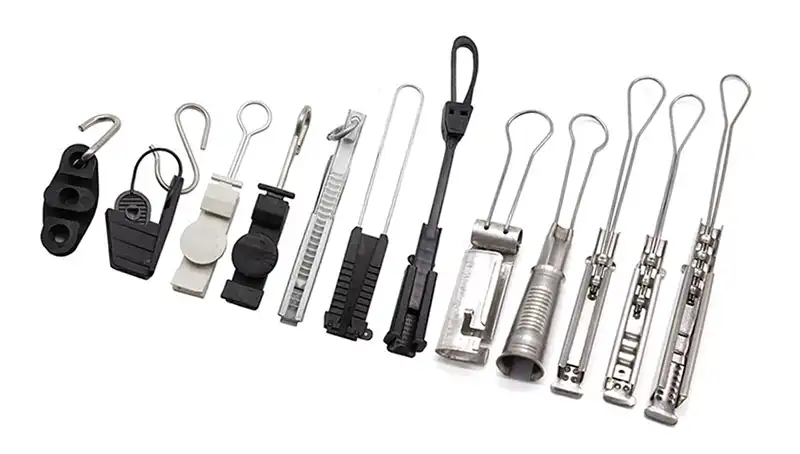
The type of clamp chosen for installation depends on factors like the application, conductor material, voltage level and installation requirements. They should also adhere to the industry standards, specifications and local regulations for a particular power transmission project. The following are the major types of drop wire clamps.
- Wedge type drop wire clamp – This clamp consists of a wedge which inserts into the body as the clamp is tightened. It provides a secure grip on the wire and is commonly used for both copper and aluminum drop wires.
- Parallel groove clamp – These clamps are used for both overhead power lines and service drops. They consist of a body with parallel grooves where the conductor is placed. The clamps are then tightened to grip the conductor securely. Parallel groove clamps are also used together with dead end fittings to terminate or anchor the drop wire.
- Clevis type drop wire clamp – Clevis clamps feature a U-shaped clevis or yoke that holds the drop wire. The clevis secures with a pin or bolt which provides a simple and effective method of attachment. These clamps are mostly used for medium-voltage service drops and are often made of galvanized steel or corrosion resistance materials.
- Suspension type drop wire clamp – These are used to suspend the drop wire from messenger wires or support structures. They feature a saddle-shaped body that holds the drop wire and a bolt or fastening mechanisms to secure it. Suspension type clamps also offer mechanical strength and prevent damage to the drop wire.
Applications of the drop wire clamps
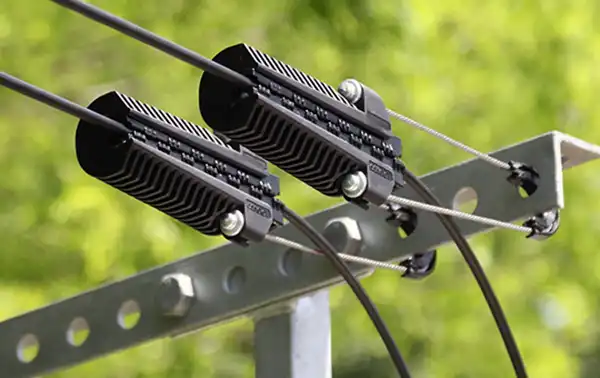
Drop wire clamps work in different applications in the fields like power transmission and distribution lines. The applications vary depending on the requirements of the power transmission systems, local regulations and industry standards.
- Service drop connections: Drop wire clamps secure and support drop wires that connect service cables to buildings or other structures. They also provide a reliable attachment point and help maintain the proper tension of the drop wire.
- Temporary installations: Short-term installations for drop wire clamps include construction and maintenance activities, which offers a quick and secure method of attaching temporary drop wires or cables to structures until permanent connections establish.
- Overhead power lines: Drop wire clamps work with dead end fittings to terminate or anchor overhead power lines. They also help secure the conductors and prevent sagging or movement caused by wind, ice or other environmental factors.
- Fiber optic cable support: Drop wire clamps also support fiber optic cables in communications and data transmission applications. They provide a secure attachment point for the ADSS or OPGW cables which prevents sagging and maintaining proper signal transmission.
- Messenger wire suspension: Drop wire clamps help maintain the proper elevation and alignment of the messenger wire ensuring the stability and integrity of the power transmission systems.
Installation of drop wire clamp
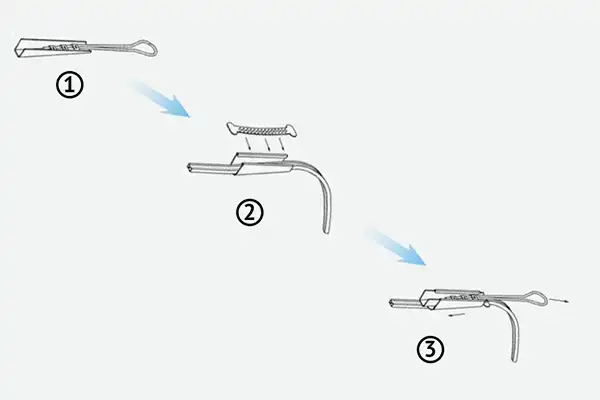
Installation process may vary based on factors such as the specific type of drop wire clamp, local regulations and industry practices. You should always refer to the manufacturers’ guidelines and consult with professionals experienced in power transmission line installations. This ensures the proper and safe installation procedures are followed. Here is a step-by-step guide on drop wire clamp installation.
- Safety measures
It is vital to adhere to safety guidelines and wear appropriate personal protective equipment. You should also ensure that the area is clear of any hazards and that proper precautions are taken to prevent accidents. - Selection of appropriate clamps
Choose the appropriate type and size of drop wire clamps based on the application, conductor material, voltage level and installation requirements. - Preparation of the installation site
This includes making sure the installation site is clean and free from any debris or obstructions. - Clamp positioning
Place the drop wire clamp at the desired location along the power transmission line or service drop. It should also be properly aligned and positioned according to the installation requirements. - Clamp attachment
Using the appropriate hardware, secure the drop wire clamp to the support structure or pole. - Pace the drop wire clamp
Insert the drop wire into the clamp and ensure it is properly seated. - Tensioning and alignment
Adjust the tension of the drop wire to the required specifications which ensure that it is properly aligned and does not sag excessively. - Final checks
This includes performing a thorough inspection to ensure that everything is secure, properly aligned and meets the required standards and specifications.
Choosing the best drop wire clamp
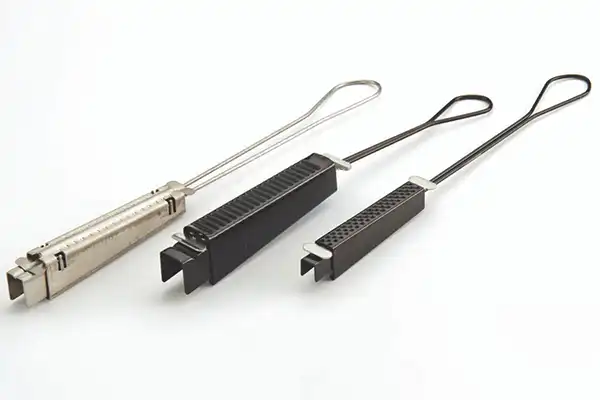
Choosing the best drop wire clamp needs consideration of several factors to ensure it meets the intended requirements. You should also consult with industry professionals or contacting suppliers directly to achieve valuable insights and guidance. The following are the factors to be considered.
- Application assessment – Determine the intended application of the drop wire clamp. Consider whether it will be used for services drop connections, overhead power lines fiber optic cables or other purposes. Different applications may require specific clamp designs and features.
- Conductor material and size – Take into account the material and size of the conductor that the clamp will be securing. Also consider whether the clamp is suitable for the specific conductor material such as copper or aluminum, and the size range it can accommodate.
- Voltage level – Higher voltage lines may require clamps with additional insulation or specific voltage ratings to ensure proper electrical performance and safety.
- Mechanical strength – Evaluate the mechanical strength of the clamp. It should be able to withstand the tension and loads placed on the drop wire without deformation or failure. Also look for clamps made of durable and corrosion-resistant materials that withstand environmental conditions.
- Installation requirements – Installation requirements and constraints of the power of the power transmission lines. These include available space, mounting options and compatibility with existing hardware.
- Compliance standards – Check whether the drop wire clamp complies with relevant industry standards and specifications.
- Manufacturer reputation – The reputation of a manufacturer or supplier is important. They should also have a track record of producing high-quality and reliable products.
- Cost – Evaluate the cost effectiveness of the drop wire clamp before purchase. You should also consider the overall value, durability and performance of the clamp.
FAQs
A wire clamp is a device used to secure a wire to a support structure. Wires are the conductors that connect a utility pole to a building or other structure. Wire clamps are typically made of metal or plastic and have a variety of features, such as serrated teeth, spring-loaded jaws, or screw-down mechanisms.
There are a variety of wire clamps available, each with its own advantages and disadvantages. Some of the most common types of wire clamps include:
Serrated-tooth clamps: These clamps have a series of serrated teeth that grip the wire. Serrated-tooth clamps are easy to use and can be installed quickly. However, they can be difficult to remove and may damage the wire if not used properly.
Spring-loaded jaws: These clamps have spring-loaded jaws that grip the wire. Spring-loaded jaws are more secure than serrated-tooth clamps and can be used with a variety of wire sizes. However, they can be more difficult to install and may damage the wire if not used properly.
Screw-down clamps: These clamps have a screw that tightens around the wire. Screw-down clamps are the most secure type of wire clamp, but they can be the most difficult to install.
When choosing a wire clamp, it is important to consider the following factors:
The type of wire: There are different types of wires, including copper, aluminum, and steel. Each type of wire requires a different type of clamp.
The size of the wire: Wires come in a variety of sizes. It is important to choose a clamp that is the correct size for the wire.
The environment: Wire clamps are exposed to the elements, so it is important to choose a clamp that is made of a durable material.
The cost: Wire clamps range in price from a few dollars to several hundred dollars. It is important to choose a clamp that fits your budget.
The installation process for wire clamps varies depending on the type of clamp. However, there are some general steps that can be followed:
Remove the old clamp: If there is an old clamp in place, it must be removed before the new clamp can be installed.
Clean the area: The area where the clamp will be installed should be clean and free of debris.
Position the clamp: The clamp should be positioned so that the jaws or screw are centered on the wire.
Secure the clamp: The clamp should be secured in place using the appropriate method.
Always wear safety glasses when working with wire clamps.
Never work with wire clamps near energized lines.
Always use the correct type of clamp for the job.
Follow the manufacturer’s instructions when installing and using wire clamps.
By following these safety precautions, you can help to prevent accidents and injuries.

